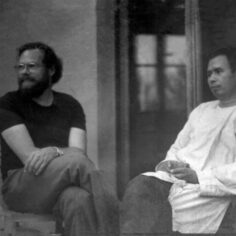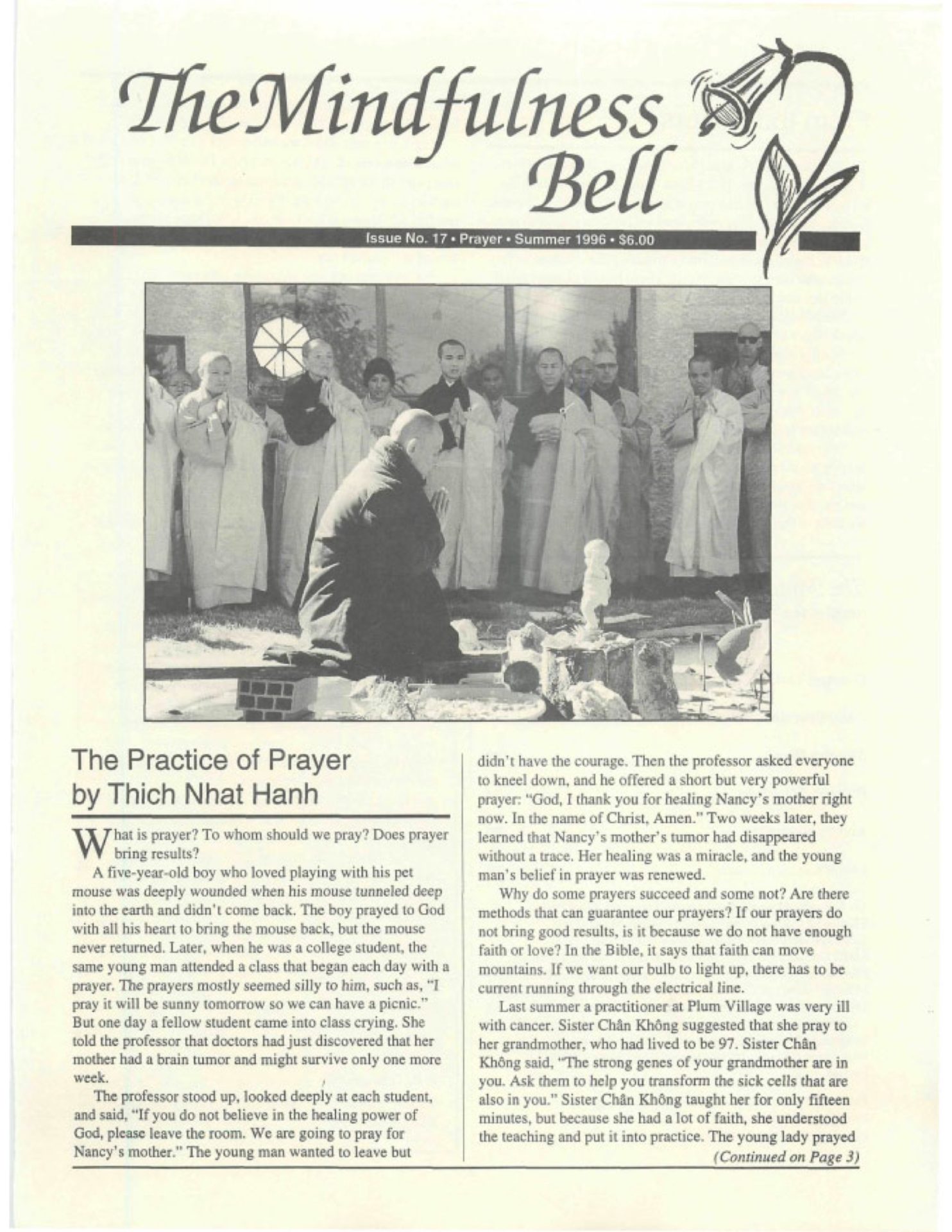By Jim Forest in June 1996
In 1967 and 1968, I was often Thich Nhat Hanh’s traveling companion. In the 1970s I lived with him for a time in France, so I carry from those years not only memories of what he said but what it was like living with him.
To this day, when I climb up flights of stairs, Thay is present because he taught me how to breathe while climbing the five flights that stood between the street and my apartment. To breathe and walk in a mindful way means not being breathless but feeling refreshed at the end of the ascent.
By Jim Forest in June 1996
In 1967 and 1968, I was often Thich Nhat Hanh's traveling companion. In the 1970s I lived with him for a time in France, so I carry from those years not only memories of what he said but what it was like living with him.
To this day, when I climb up flights of stairs, Thay is present because he taught me how to breathe while climbing the five flights that stood between the street and my apartment. To breathe and walk in a mindful way means not being breathless but feeling refreshed at the end of the ascent. He is often with me when I feel anger, for he had good advice about how to breathe in such times: inhaling and exhaling slowly and deeply, aware of each breath, an action that can convert rage to compassion.
What Thay teaches, I have come to appreciate, is a way of prayer that reaches even the areas of deepest bitterness and hopelessness. Thanks to him, I have found it easier to practice one of the harder disciplines Jesus imposes on his followers: prayer for enemies. In The Miracle of Mindfulness, Thay asks us to contemplate the features of a person we hate, and to examine what makes this person happy and what causes them suffering. This should be continued until we feel compassion rising in our heart. Perhaps the hardest part of such a simple exercise is making the first step—wanting to want good rather than bad for a person whose name or image makes your blood boil and steam come out of your ears. The truth is you don't yet want good things to happen to this person, but you are trying to want it. This is hard work. But I can vouch for the wisdom and effectiveness of this advice. Just to contemplate a hated person's face is more than a beginning.
In my practice as a Christian of the Russian Orthodox tradition, I have learned to connect this both to my breathing and the Jesus Prayer (sometimes called the Prayer of the Heart). In its simplest, shortest form, the prayer is, "Jesus, mercy." In its longer, probably most widely used form, it is, "Lord Jesus Christ, Son of God, have mercy on me a sinner," but for some of us, that text might well ring the wrong bells and require a long explanation. The main thing is simply to say that Thay's exercise can be linked with a simple prayer for mercy and that can be connected with breathing.
Jim Forest is the author of several books, including Living with Wisdom, a biography of Thomas Merton, Religion in the New Russia, and Love is the Measure, a biography of Dorothy Day. He lives in Holland where he is secretary of the Orthodox Peace Fellowship and editor of its journal, In Communion


